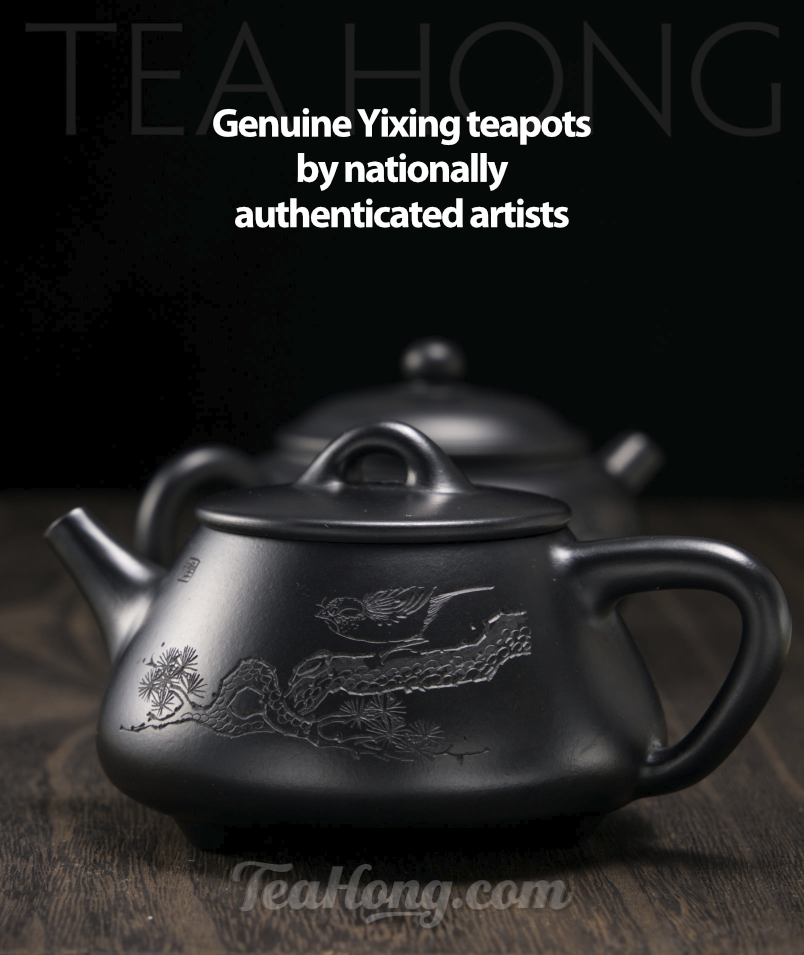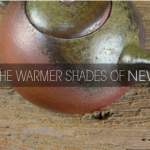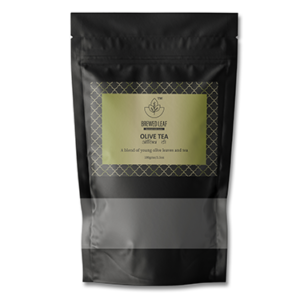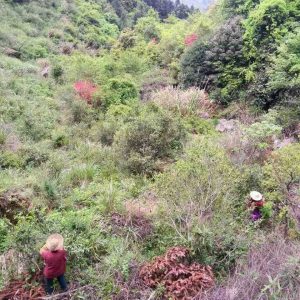Home › Dialogues › Tea Making › How to choose a Yixing pot?
Tagged: imitation-yixing-teapot, yixing-teapot
- This topic has 18 replies, 8 voices, and was last updated 11 years ago by
bebemochi.
-
AuthorPosts
-
-
2013.01.21 at 3:03 am #9050
Leo
ParticipantThere are many factors affecting the price of a Yixing pot. In a normal market, it is the materials and processing, the crafting expertise, the fame of the craftsperson, and the profit margins within the supply chain.
That said, however, the proportions in these factors have been quite distort in most cases. Lies, or exaggerations, are the strongest common thread in the distortion. The worst offenders are often found to be the retailers and second wholesalers. Common quality and ordinary artisans are labelled as great ones. Second wholesalers also encourage artisans to imitate the styles and signature seals of high ranking craftspersons to produce pots which pots are otherwise tens or hundreds of times lower in price.Another way to cheat the customer is to photograph a genuine one and deliver an imitation. It is most often happening in the internet market.What I think is the worst thing in the market, however, is the use of common clay to imitate Yixing clay. The use of various chemicals to colorize and change the surface finishing is commonplace. The products are good for decoration but not good for use. They are likely to be harmful to health. They are what some readers and customers show me what they have as Yixing pots. They are made in small villages and suburbs all over China. Initially it was a small shady industry for tourist gift shops and street vendors. Now the products are everywhere.I have not yet answered you how to distinguish a genuine Yixing pot, because that is a very, very big subject. Let me answer it in subsequent articles in the main site.One thing I need to stress is that a good genuine Yixing pot is a great tool and a great collection piece. The price does appreciate even after use (actually more after good use). The supply of good Yixing clay is lowering and the demand is rising. -
2013.01.21 at 10:46 pm #8934
MEversbergII
ParticipantIndeed; these factors are why I’ve held off. If TeaHong begins to carry them, then I’ll invest. Until then, the gaiwan and my ordinary ceramic pot will suffice.
M. -
2013.01.22 at 7:54 am #8935
teacorner
ParticipantI am begginer in tea art and I use the gaiwan many time to brew a tea.Some day I use a small clay teapot(maybe Yixing) who I make shu puer.This teapot is very appropiate to authentic yixingteaspot factors.So is not authentic, I think is good to make tea,because is very useful to understand how is gong fu practice in a small teapot(is 120 ml volume).It work very good!And the infusion goes well!
-
2013.01.23 at 5:01 pm #9005
tea soul
ParticipantIt has taken me a lot of time and many bad choices to begin understanding what Yixing pot is about. I think I am now only a beginner. It is better to start early because the pots are getting more expensive.
-
2013.02.23 at 8:51 pm #8543
teanewby
ParticipantThere are sooo many Yixing (zisha?) teapots available on the net! So many different prices and styles. How to choose a good basic one for a beginner? What are the criteria?
-
2013.02.25 at 11:42 am #9439
teanewby
ParticipantMaybe I have been pushy. My apologies. I have been visiting many sites trying to learn about the subject. I really want to have Leo’s guideline before I make a purchase decision.
-
2013.02.25 at 8:31 pm #9671
bebemochi
ParticipantNow I’m a little concerned. The reason being I’ve got this ragtag collection of tiny teapots some of which are more reputable than others.
Its one thing to find out that my teapot is an imposter (ie. not made from yixing clay) but more importantly how on earth can I tell if my teapot is actually leaching harmful substances?Another issue I’ve been wondering about is this: one of my favourite teapots is also the ugliest, for instance the lip of the lid doesn’t fit flush to the rim of the teapot neck and instead of being smooth and seamless the joint between the spout and the body is visible (although the integrity of the join is sound). Perhaps I like this ugly duckling teapot because I’m no tea expert. Do these sorts of flaws highlight an inferior product which should be avoided because it will negatively affect the infusion variables etc. or is there beauty in imperfection? -
2013.02.25 at 11:07 pm #9642
CHAWANG
Participantplease no use imitation yixing clay pots for tea. not all, but some, use clay with bad chemicals. you cannot sure which is bad ones. also bad for learning gongfu skill correct way
-
2013.02.25 at 11:13 pm #9643
CHAWANG
Participanthello teanewby, if you read leo writing for long time, you know he always takes long time to write something. he is very busy man with many things to do. always many people asking him things. i know he is preparing many zisha pots and raw material to write last time he came back from china two months ago. i am waiting for the writing too! 😉
-
2013.03.19 at 3:05 am #9379
LaHamsa
ParticipantNow I’m wondering how many of my small collection of Yixing teapots are really Yixing ware. I think the most expensive was only $30 or $35 and most were around $25, though in my defense I bought them between ’85 & ’95, so maybe now they’d cost a little more. I know cost isn’t what determines genuineness, but I wonder if it was even possible then to buy a genuine Yixing pot for that amount? Most of them came from small local tea &/or Asian art & craft importers who all seemed genuinely honest & ethical.
They’re all well made, as far as I can tell, though a few lids are looser than I’d like. I just wish I still had the first one I ever bought. It was a graceful sort of simplified djinn’s lamp shape w/a poem calligraphed on one side. It came w/a certificate guaranteeing it had come from Yixing. When a housepainter knocked it off its shelf & broke it 12 years later I cried. I’ve been a fervent adherent of museum putty ever since ;-).
That makes me wonder, in fact: is museum putty harmful to Yixing pots?
~Hamsa
-
2013.03.21 at 9:41 am #9368
Leo
ParticipantI don’t know much about the composition of museum putty but I have used similar things when photographing Yixing pots. I have never let them in contact for long time though. I guess you should check from time to time if the putty is leaving any darkened color on the surface of the pot, if it does, it should be doing what it says it would: not harming the surface. Other putties, clays, or wax which may contain various sorts of solvents, extenders, or emulsifiers do release these substances into the surface it is in contact with. They are not good.
-
2013.04.03 at 11:15 pm #9210
MEversbergII
ParticipantI am suspicious as to the pricing on these:
M. -
2013.04.06 at 5:06 am #9191
Leo
ParticipantThey are really low quality imitations. If you look closely, most can’t even make the clay and artificial dye consistent.
-
2013.04.06 at 5:06 am #9192
Leo
ParticipantI believe there are other internet shops that do better than this for Yixing pots.
-
2013.04.08 at 1:29 pm #9140
MEversbergII
ParticipantI’ll wait for TeaHong. My simple earthenware pot, glazed as it is, is probably fine (I hope there is no lead in the glaze). If you’re saying the dyes are artificial I’ll buy that, and given that they’re not glazed I don’t expect that the dye will stay put.
M.
-
2013.04.18 at 11:08 am #8929
LaHamsa
ParticipantLeo, I think I see what you mean about consistency. It’s so good to learn to look closely like that-at first I didn’t see anything wrong, and I had to just let my eyes relax and gaze. Then I began to see places where it looked like bubbles had popped, and tiny smears in other spots. I noticed some tiny smears where the clay hadn’t been smoothed out. I saw that the surfaces looked too smooth and shiny,without the subtle, fine, almost burnished-looking grain I’m used to seeing in what I hope are real Yixing pots :-). The colors lacked tone, & some were just ugly. Worst, a lot of the spouts looked like they were set too low & would spill hot tea out when it wasn’t expected.
I feel like I’ve written a report for a class assignment. I didn’t intend to, but how did I do?
Hamsa
-
2013.04.18 at 11:17 am #8930
LaHamsa
ParticipantLeo, I think I see what you mean about consistency. It’s so good to
learn to look closely like that-at first I didn’t see anything wrong,
and I had to just let my eyes relax and gaze. Then I began to see places
where it looked like bubbles had popped, and tiny smears in other
spots. I noticed some little smears in the clay that hadn’t been
smoothed out. The pot surfaces looked too smooth and shiny, without the
subtle, fine, almost burnished-looking grain I’m used to seeing in what I
hope are real Yixing pots :-). The colors lacked tone, & some were
just ugly. Worse, a lot of the spouts looked like they were set too low
& would spill hot tea out when it wasn’t expected.I didn’t intend to, but I feel like I’ve written a report for a class assignment. How did I do?
Hamsa
-
2013.04.19 at 11:04 am #8912
Leo
ParticipantThat’s an A+. You’ve made me miss my old days as a teacher. I was doing lunch with a Taiwan producer today and one of them talked about how information is important in empowering the consumers. I agreed but added that it requires actually physically accessing the real thing for information to be really understood. Now at least you are half way there observing the photos of the (un)real things.
-
2013.04.20 at 4:41 pm #8885
MEversbergII
ParticipantEnlightened figures; we’re fighting a battle over here for information. As it pertains to food, the big debate rages over whether genetically modified foods need labeling.
That is also why I am apprehensive to buy any teaware online. Yixing? Zisha? Mud from the garden? No idea. So I turn to people who have a clue.M.
-
-
AuthorPosts
- You must be logged in to reply to this topic.










